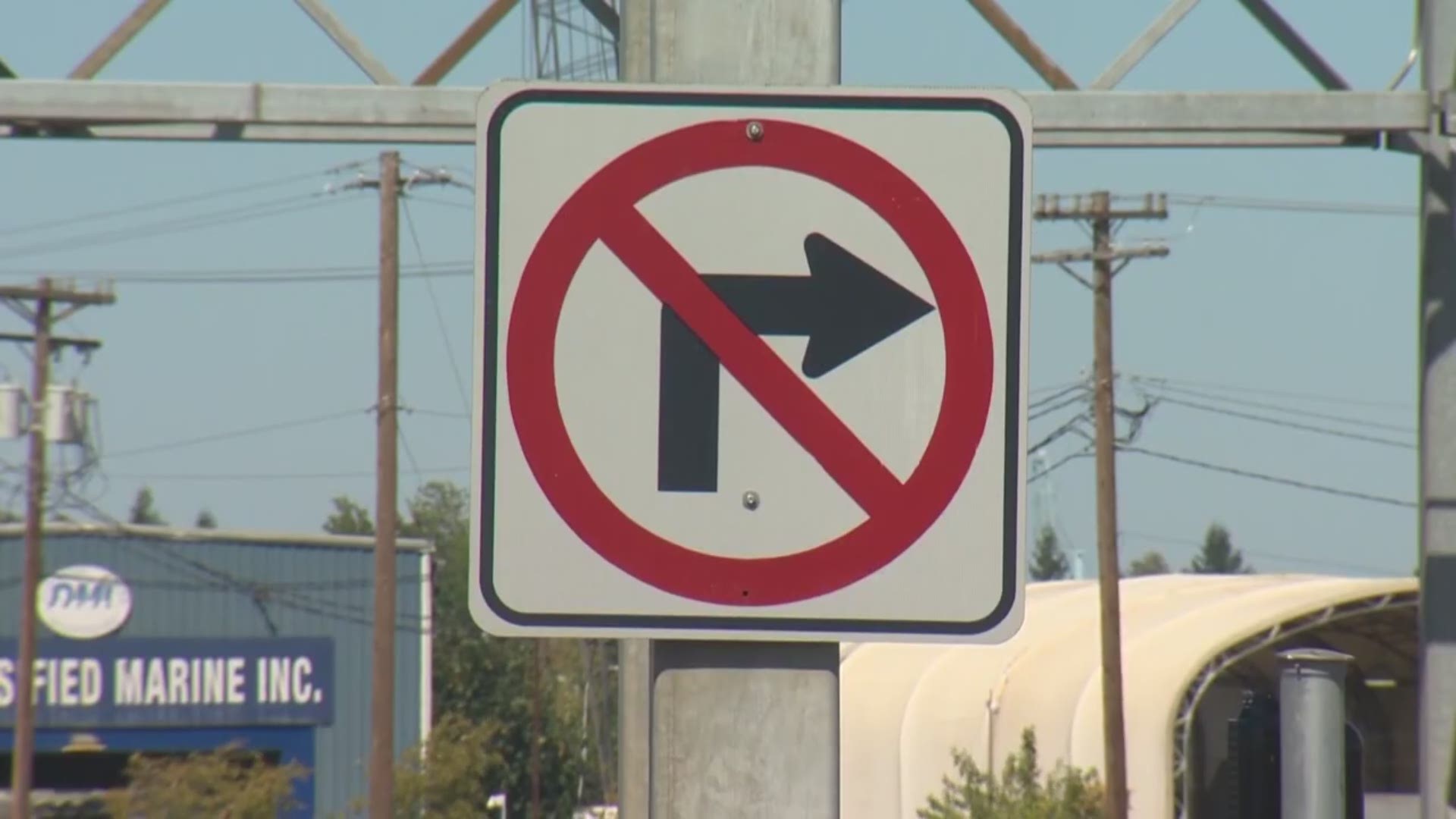PORTLAND, Oregon — It's 4 p.m. on a Thursday, and you're skipping out of work a few minutes early to beat the rush home to Vancouver.
Too late. Way late. That ship sailed. Interstate 5 northbound has been stacked up for an hour and that means the on-ramps are also clogged.
But maybe none as bad as the Marine Drive on-ramp. You've got thousands of cars headed east from the peninsula, and just as many headed west from other parts of North Portland. They're all meeting here.
Most of you are patient, you cope, you stay courteous and obey traffic laws with the "we're all in this together" mindset. But there are always a few, in this case dozens (maybe hundreds) of drivers that cut the line, costing you even more time. It makes drivers we talked to furious.
Michael Peterson has been commuting through the area for more than three decades. He's the one who first alerted me to just how bad the issue actually is.
Listen to him describe sitting through 17 consecutive lights.
The most frequent offenders were westbound vehicles making an illegal right onto the I-5 northbound on-ramp. Both eastbound and westbound traffic have a small but dedicated access to that on-ramp. The lineup from both sides is bad.
You should see the "secret" (no longer) shortcut that some of those drivers take to bypass that line up. That one is perfectly legal, though it's over a rutted, unimproved access road.
But rather than wait in their designated lane, some westbound traffic bypasses that and continues onto I-5 via the eastbound exit ramp. It's illegal. There are two visible no right turn signs posted.
And here's the beef. For every car that makes that illegal right turn (mind you, there's four, five, six at a time when there's no visible enforcement in the area) that means four, five, six fewer cars can make the legal left turn from the west.
The result is gridlock. And now you understand how it can take 45 minutes to an hour to drive one mile daily.
A group of drivers we talked to have been in touch with the Oregon Department of Transportation and Portland police over the years. That correspondence dates back to at least 2014, when the problem really seemed to ratchet up. After numerous studies, and occasional enforcement stings, both ODOT and Portland police have said they've done all they can.
Here's what ODOT engineers said in a prepared statement:
"Traffic Investigations, Signal Managers, Region 1 Maintenance and Portland Police Bureau have done everything possible to improve operations, safety, and poor driver behavior in this interchange area. Unfortunately, the significant over-capacity issues at this location cannot be relieved by signing, minor adjustments to signal phasing, or tubular markers. As shared in the past, this intersection is no longer operating efficiently due to the over-capacity issues on the I-5 freeway and the bottleneck of the Interstate Bridge. Until such a time that these issues can be addressed there is very little that can be done from an engineering standpoint."
In our visits to the area, we noticed Portland police making a few stops, but the area is not considered a high-crash corridor.
Portland police Sgt. Ty Engstrom, who often makes stops in the area, shared his thoughts in an email:
"We understand the frustrating effect this behavior, as well as other similar rush-hour behaviors, have on commuters and we try our best to address them as we are able, but we need to be as resourceful as we can with what we have."

